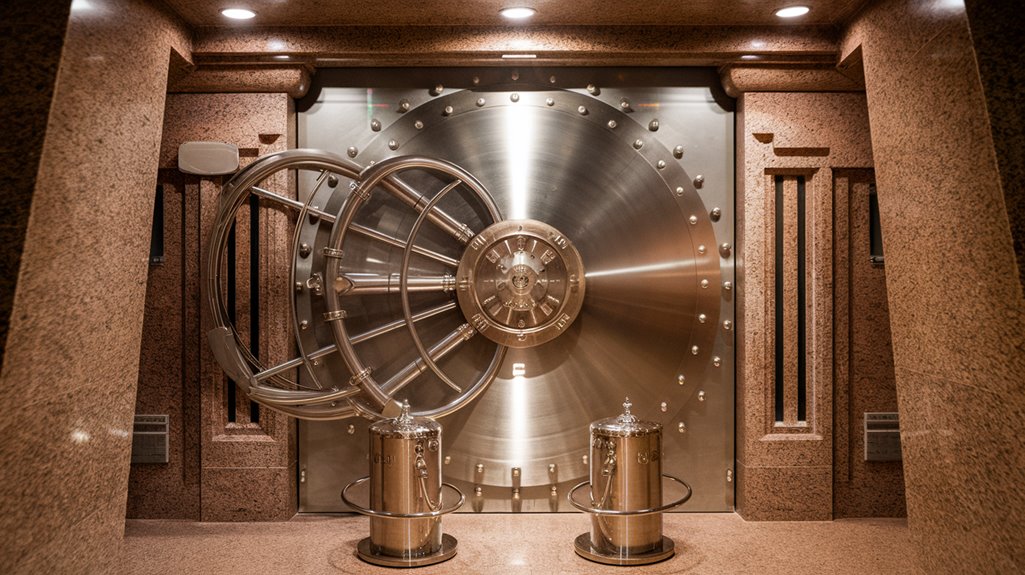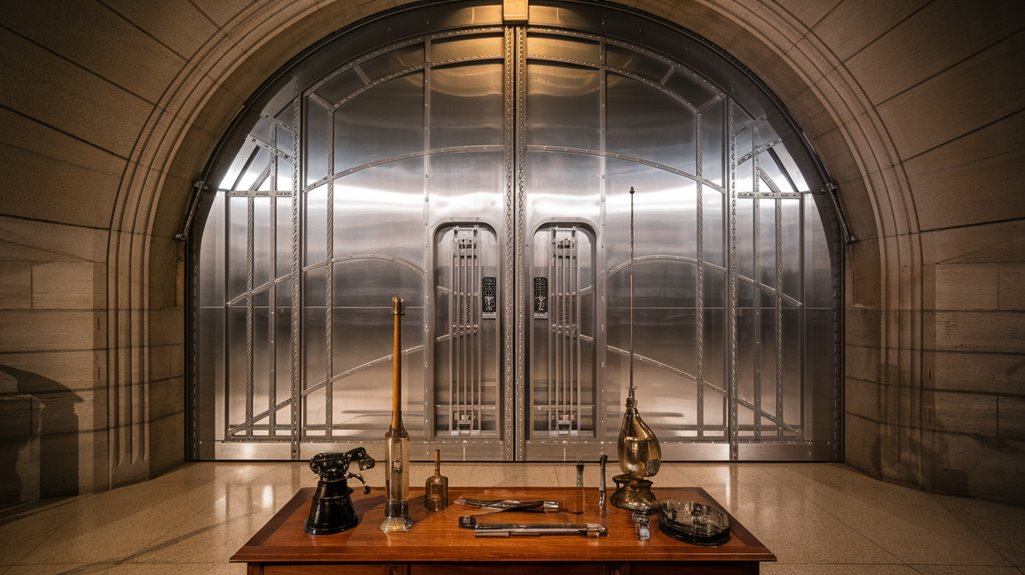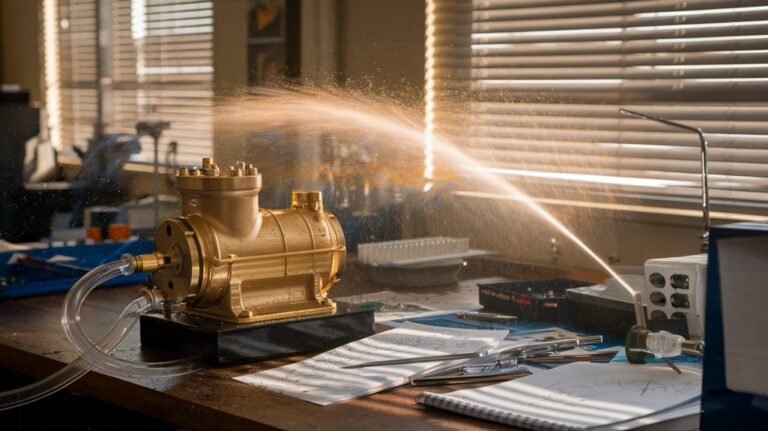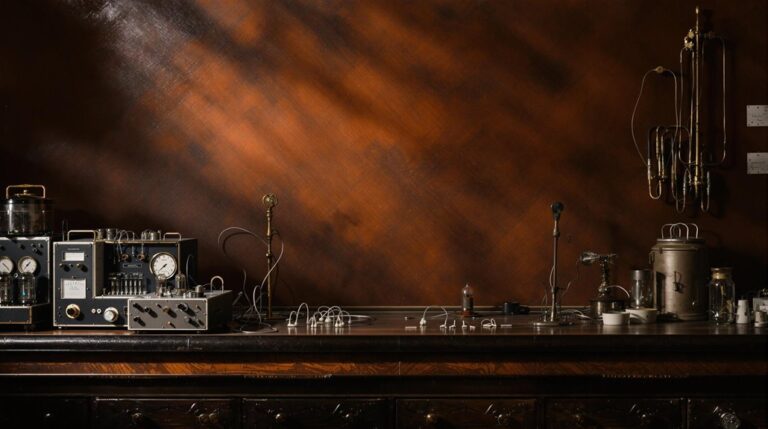Sealed ’Til 8113: The Crypt of Civilization
Like Noah's Ark preserving life for future generations, the Crypt of Civilization safeguards humanity's story beneath an Atlanta university. You'll find this pioneering time capsule isn't just another historical footnote—it's humanity's most ambitious message in a bottle. When the vault's sealed doors finally open in 8113, our distant descendants will uncover a carefully curated snapshot of life from the 1930s. But what compelled its creators to choose such a distant date, and what secrets lie within?
The Birth of Humanity's First Modern Time Capsule

When archaeologist Dr. Thornwell Jacobs realized how little we knew about ancient civilizations in 1936, he envisioned a solution of immense time capsule significance: the Crypt of Civilization. His groundbreaking idea would preserve a thorough snapshot of human knowledge for future discoveries millennia ahead.
You'll find this ambitious project, recognized by Guinness World Records as humanity's first modern time capsule, beneath Oglethorpe University's Phoebe Hearst Hall in Atlanta. The crypt contains no valuable items like gold or jewelry, focusing instead on historical preservation.
Working with scientist Thomas K. Peters, Jacobs designed a sealed vault measuring 20 feet long, 10 feet high, and 10 feet wide. The team carefully constructed it between 1937 and 1940, lining it with porcelain enamel plates and securing it with a stainless steel door. The project generated significant media attention, appearing in publications like the New York Times and Scientific American.
The crypt's scheduled opening in 8113 guarantees a 6,000-year preservation of twentieth-century life.
Inside the Vault: A Snapshot of 1930s Life
Sealed within the massive vault, an extraordinary collection of over 640,000 microfilmed pages and hundreds of newsreels captures the essence of 1930s life.
You'll find daily struggles reflected in the artifacts, telling a story of an era when families earned just $7 weekly and patched shoes with tire rubber.
The cultural reflections range from voice recordings of world leaders like Hitler and Roosevelt to playful items like Donald Duck toys and Lincoln Logs.
Even a sealed bottle of Budweiser found its way into this swimming pool-sized chamber.
The crypt houses information stored in stainless steel containers filled with nitrogen to prevent deterioration.
While 82% of farm families faced poverty, the crypt preserves both their hardships and hopes through educational materials, including 800 works on arts and sciences.
Many children became part of the vagabond population, with an estimated 200,000 wandering the country after their families fell apart.
It's a stark reminder of how Americans persevered through the Great Depression.
Engineering for the Ages: Construction and Preservation
The engineering marvel of the Crypt of Civilization extends far beyond its historical contents.
You'll find remarkable engineering innovations in every aspect of its construction, from its waterproof foundation to its seven-foot-thick stone roof. The crypt's walls are fortified with vitreous porcelain enamel embedded in pitch, while the entire chamber sits securely on bedrock within Oglethorpe University's basement. The former swimming pool location provides a solid foundation against moisture. Originally inspired by ancient Egyptian pyramids, the crypt was designed to withstand millennia of environmental challenges.
The preservation techniques are equally impressive.
Working with the Bureau of Standards, engineers developed a sophisticated storage system using stainless steel containers with glass linings. They've filled these vessels with inert nitrogen to prevent oxidation, while microfilm and metal duplicates guarantee document longevity.
When you consider that it's meant to remain sealed until 8113, you'll appreciate why they've welded the door shut and replaced all oxygen with nitrogen.
Peculiar Treasures: Unexpected Items in the Collection
Inside this remarkable time capsule, you'll discover an eclectic mix of artifacts that range from the mundane to the extraordinary.
You'll find unexpected artifacts like preserved Budweiser beer, dental floss, and even a plastic Donald Duck alongside items of profound cultural significance.
The collection preserves entertainment through Artie Shaw records, champion hog caller recordings, and Lincoln Logs, while capturing history with microfilmed copies of religious texts and literary classics.
The crypt's scientific contents include an altimeter, barometer, and a curious device called the "Language Integrator."
You'll also encounter voice recordings of influential 20th-century figures like Hitler, Stalin, and Roosevelt.
From a woman's purse with typical contents to the original "Gone With the Wind" script, these diverse items paint a fascinating portrait of human civilization.
The artifacts are safely preserved in steel receptacles filled with nitrogen to prevent deterioration over the millennia.
The chamber's impressive seven-foot thick stone roof ensures maximum protection for these historical treasures.
The Long Wait: Why 8113 and Beyond

Beyond the fascinating array of artifacts lies a carefully calculated timeline that stretches far into humanity's future.
When Dr. Thornwell Jacobs launched this ambitious project in 1936, he didn't choose the year 8113 arbitrarily. You'll find this date stems from a remarkable historical connection:
- The first recorded date in Egyptian history was 4241 BC
- From 1936, that marked 6,177 years of recorded history
- Jacobs projected another 6,177 years forward, landing on 8113 AD
A special English-learning machine was strategically positioned near the entrance to help future civilizations decode the crypt's contents.
 20 feet long, was built to exact specifications to ensure its contents would survive millennia.
20 feet long, was built to exact specifications to ensure its contents would survive millennia.
While the crypt's contents reflect 1930s cultural relevance, there's no guarantee future societies will comprehend its significance.
The English language may evolve beyond recognition, and technological innovations might render the preserved items obsolete.
Yet, like the Egyptian pyramids that inspired it, the crypt stands as humanity's ambitious attempt to bridge millennia.










